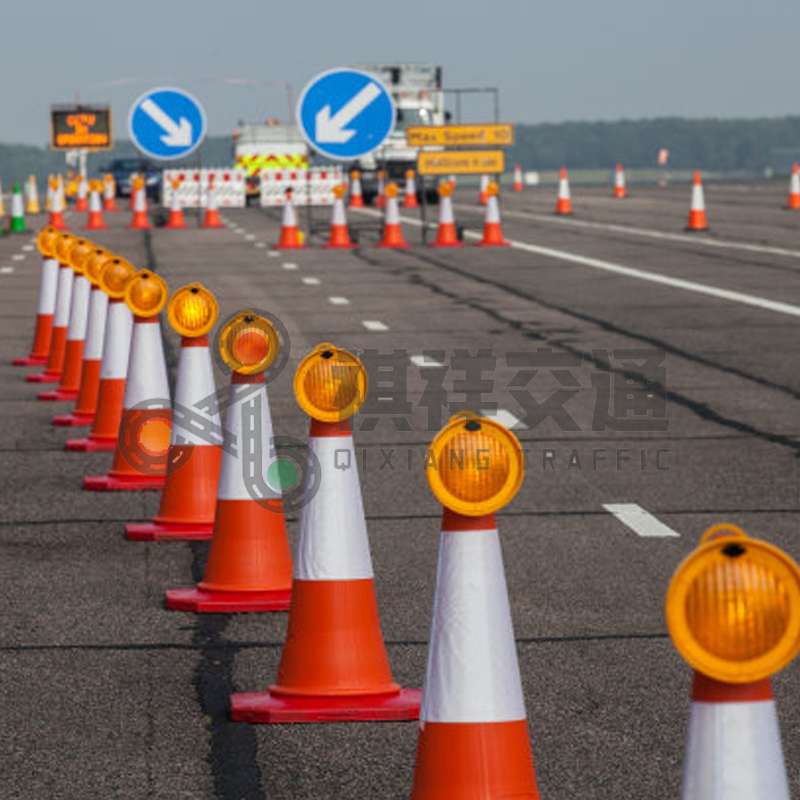One of the most common objects you will encounter when passing through construction areas, road maintenance areas, or accident scenes is traffic cones. These bright (usually orange) cone-shaped markings are critical for guiding drivers and pedestrians safely through potentially dangerous areas. But have you ever wondered why traffic cones are shaped like a cone? This article delves into the reasons behind the iconic design of traffic cones and explores their implications for traffic management and safety.
Evolution of traffic cones
Before we delve into the details of their shape, it’s worth briefly reviewing the history of the traffic cone. The first traffic cones were invented in the early 20th century by Charles P. Rudabaker, who originally designed them for use in road construction. These early versions were made of concrete, which made them heavy and difficult to move. Designs have evolved over time, and modern traffic cones are now typically made from durable, lightweight materials such as PVC or rubber.
Conical shape: necessary design
The conical shape of the traffic cone was not chosen at random; it was a design born out of necessity and practicality. Here are a few reasons why conical shapes are great for traffic management:
1. Stability and Wind Resistance
One of the main reasons for the conical shape is stability. The cone’s wide base provides a lower center of gravity, making it less likely to tip over when affected by wind or airflow from passing vehicles. This stability is critical to maintaining the cone’s position, ensuring it effectively demarcates restricted areas and directs traffic as intended.
2. Stackability
The conical shape is easy to stack, which is a significant advantage for storage and transportation. When not in use, the traffic cones can be nested within each other, taking up minimal space. This stackability allows road crews to conveniently transport large numbers of cones to and from the job site, increasing efficiency and reducing logistical challenges.
3. Visibility
The shape of the cone combined with its bright color makes the traffic cone clearly visible from a distance. The tapered design ensures the cone is visible from all angles, which is vital in alerting drivers and pedestrians to potential hazards. The shape also allows for the addition of reflective strips, further increasing visibility at night or in low-light conditions.
4. Durability and Flexibility
Modern traffic cones are designed to be both durable and flexible. The cone shape helps with this because the cone can flex and bend when hit by a vehicle, rather than cracking or shattering. This flexibility not only extends the life of the cone, but also reduces the risk of vehicle damage and occupant injury.
Role of traffic cones in safety
Traffic cones play a vital role in ensuring safety on roads and various other environments. Their main function is to guide and direct traffic, helping to prevent accidents and maintain order. Here are some specific ways traffic cones help safety:
1. Construction Area
In construction areas, traffic cones are used to delineate work zones to ensure the safety of workers and drivers. They help establish clear boundaries, direct traffic away from danger areas, and ensure smooth vehicle passage through the construction site.
2. Accident Scene
At the scene of an accident, traffic cones are used to cordon off the area, protecting emergency personnel and preventing further accidents. They help create a secure perimeter that allows first responders to work efficiently without being disrupted by passing traffic.
3. Special Events
During special events such as parades or marathons, traffic cones are used to manage crowds and direct pedestrian and vehicular traffic. They help create temporary pathways and barriers to ensure events run smoothly and safely.
4. School District
In school zones, traffic cones are often used to create safe crossing areas for children. They help slow traffic and create a visible, protected space for students to cross.
In conclusion
Traffic Cone is a testament to the power of thoughtful engineering with its simple yet effective conical design. Its shape provides stability, visibility and durability, making it an indispensable tool in traffic management and safety. Whether guiding drivers through construction zones, protecting first responders at accident scenes, or keeping pedestrians safe at special events, traffic cones play a vital role in maintaining order and preventing accidents. Next time you see a traffic cone, take a moment to appreciate the ingenuity behind its design and the important role it plays in keeping our roads and communities safe.
Welcome to contact traffic cones supplier Qixiang for more information.
Post time: Sep-19-2024







